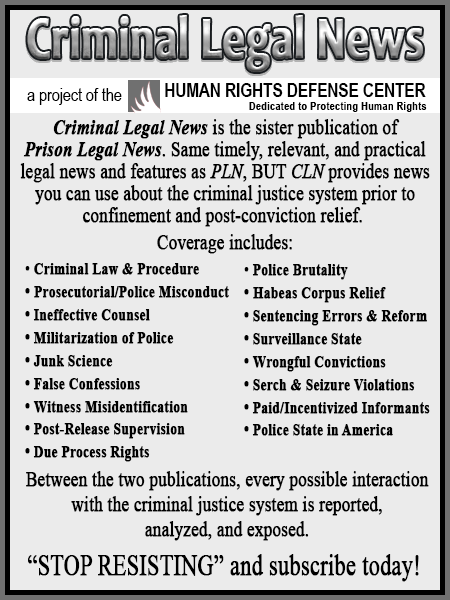First Circuit Announces What Constitutes ‘Otherwise Using’ a Dangerous Weapon for Purposes of the Four-Level Enhancement Under Guidelines § 2B3.1(a)
The United States Court of Appeals for the First Circuit held that the U.S. District Court for the District of Puerto Rico improperly applied the four-level sentencing enhancement for “otherwise using” a dangerous weapon under U.S. Sentencing Guidelines (“Guidelines”) § 2B3.1(a) to the defendant’s sentence for carjacking because the District Court lacked a sufficient factual basis to apply the enhancement.
Background
On August 19, 2019, as part of a spree of robberies, Jesus Abdiel Feliciano-Candelario (“Feliciano”) robbed and carjacked a couple—a man and woman—in front of their home. When the man got out of the car, Feliciano approached the woman, displayed a knife, and said “look what I have here.” The woman handed her purse to him, and Feliciano demanded the car keys. At that time, the man became aware of what was happening and ran towards the car, telling Feliciano they would not hand over the keys. As he ran towards the woman, the man fell down. As he was getting up, he saw Feliciano raise the knife and heard him threaten to kill them if they did not give him the keys. The man then threw the keys to Feliciano, who took them and drove off in their car.
Feliciano was subsequently apprehended and charged with various crimes related to the robberies and carjacking spree. Feliciano and the Government ultimately reached a plea agreement, wherein the three-level enhancement for “brandishing a dangerous weapon” under § 2B3.1(b)(2)(E) would apply to the carjacking count. The parties also agreed to a joint recommended sentence of 130 months. Prior to sentencing, probation filed its presentence investigation report but applied a four-level enhancement for “otherwise us[ing]” a dangerous weapon under § 2B3.l(a) because Feliciano “raised the knife and threatened to kill [the victims] if they did not give him the keys to the vehicle.” The four-level enhancement resulted in a probation-calculated Guidelines range of 157 to 181 months’ imprisonment.
Over Feliciano’s objections, the District Court concluded, among other things not relevant here, that “a dangerous weapon was otherwise used” during the carjacking and ultimately sentenced Feliciano to the maximum Guidelines sentence of 181 months. Feliciano timely appealed.
Analysis
The issue on appeal was whether a verbal threat to kill a specific individual or individuals paired with raising a knife qualifies as the defendant having merely “brandished” or “otherwise used” the knife under the Guidelines. If the former, then a three-level enhancement applies, but if the latter, then a four-level enhancement applies.
The Court began its analysis by noting that § 2B3.1(b)(2)(E) provides for a three-level enhancement “if a dangerous weapon was brandished or possessed” during the commission of a robbery. But a four-level enhancement applies “if a dangerous weapon was otherwise used” during a robbery. § 2B3.1(a).
The term “brandished” is defined in the Commentary to the Guidelines as follows: “Brandished with reference to a dangerous weapon (including a firearm) means that all or part of the weapon was displayed, or the presence of the weapon was otherwise made known to another person, in order to intimidate that person, regardless of whether the weapon was directly visible to that person. Accordingly, although the dangerous weapon does not have to be directly visible, the weapon must be present” Guidelines § 1B1.1 cmt. n.1(C).
“Otherwise used” is defined in the Commentary as follows: “Otherwise used with reference to a dangerous weapon (including a firearm) means that the conduct did not amount to the discharge of a firearm but was more than brandishing, displaying, or possessing a firearm or other dangerous weapon.” Guidelines § 1B1.1 cmt. n.1(J).
The Court stated that the First Circuit has held that brandishing weapons conveys a “general ability to do violence, and that violence is imminently and immediately available.” United States v. LaFortune, 192 F.3d 157 (1st Cir. 1999). A “pompous” or “arrogant demonstration of their presence” that warns that the weapons “may be, in the future, used and not merely brandished” still constitutes brandishing. Id. In the case of firearms, “leveling a cocked firearm at the head or body” of a victim and ordering them to do or not do something constitutes “otherwise using.” Id. (quoting United States v. Gilkey, 118 F.3d 702 (10th Cir. 1997)). Similarly, in United States v. Villar, 586 F.3d 76 (1st Cir. 2009), the defendant stuck a gun into the side of a bank teller and directed her movements, and he also pointed the gun at another teller, ordering her to move from her desk. The Villar Court concluded that the defendant made “specific” use of the gun “to make an unmistakably clear and specific threat” that constituted “otherwise” using a dangerous weapon.
The Court explained that it must determine when the use of a knife is sufficiently analogous to “specifically leveling a cocked firearm” to make “an unmistakably clear and specific threat” for purposes of the “otherwise use” enhancement. The Court observed that the First Circuit has never addressed the “otherwise use” enhancement in a case involving a knife. It noted, however, that several other Courts of Appeals have addressed this issue, and it broke them down into three categories of cases:
First, a defendant “otherwise uses” a knife when there is some physical contact between the wielder and the victim. See United States v. Elkins, 16 F.3d 952, 953-54 (8th Cir. 1994) (placing knife on throat of bystander to facilitate bank robbery); United States v. Hamilton, 929 F.2d 1126, 1127-28, 1130 (6th Cir. 1991) (holding knife against throat of victim while threatening her life and slicing her hand while victim tried to fend attacker off); United States v. Roberts, 898 F.2d 1465, 1466, 1470 (10th Cir. 1990) (putting right arm around neck while holding knife in right hand, and demanding money).
Second, the wielder “otherwise uses” a knife when they swing or attack with the knife. See United States v. Williams, 520 F.3d 414, 423 (5th Cir. 2008) (pointing and slashing homemade knife at officer); Hamilton, 929 F.2d at 1128 (slicing victim’s hand); United States v. Queen, 946 F.2d 888 (4th Cir. 1991) (per curiam) (unpublished table decision) (displaying knife and telling victim to sit down and tell police “everything was okay” and slashing at victim as they fled).
Third, the enhancement applies when the wielder uses the knife to move and control victims. See United States v. Peraza, 240 F. App’x 788, 790-91 (10th Cir. 2007) (unpublished judgment) (moving knife side to side to keep tellers at bay and holding knife close to one teller in particular to prevent interference); Queen, 946 F.2d 888 (displaying knife and making victim sit down and speak to police).
After reviewing how other Courts of Appeals resolved this issue, the Court announced that “we conclude that a victim’s physical proximity to a knife-wielder and the way the knife is wielded are both crucial factors in determining whether there was a ‘specific’ use of the [knife] to make an unmistakably clear and specific threat.” Villar.
Turning to the present case, the Court explained that it lacked the facts to determine whether the four-level enhancement for otherwise using a dangerous weapon applies to Feliciano’s carjacking of the two victims. Specifically, there is no evidence in the record showing how far away Feliciano stood from either victim when he raised the knife or whether he pointed it at the victims. The Court stated that given the lack of details in the record, Feliciano might have been several feet away from the victims when he raised the knife in a “pompous” or “arrogant demonstration” of the knife’s presence—which would still constitute “brandishing,” or he might have been only inches from them, pointing the knife tip at them—which would constitute “otherwise using.” Thus, the Court held that the District Court lacked a sufficient factual basis to apply the four-level enhancement for “otherwise using” the knife during the carjacking.
Conclusion
Accordingly, the Court vacated Feliciano’s sentence for the carjacking count and remanded the case for resentencing on the premise that the three-level enhancement for brandishing should apply. See: United States v. Feliciano-Candelario, 128 F.4th 5 (1st Cir. 2025).
As a digital subscriber to Criminal Legal News, you can access full text and downloads for this and other premium content.
Already a subscriber? Login
Related legal case
United States v. Feliciano-Candelario
| Year | 2025 |
|---|---|
| Cite | 128 F.4th 5 (1st Cir. 2025) |
| Level | Court of Appeals |




